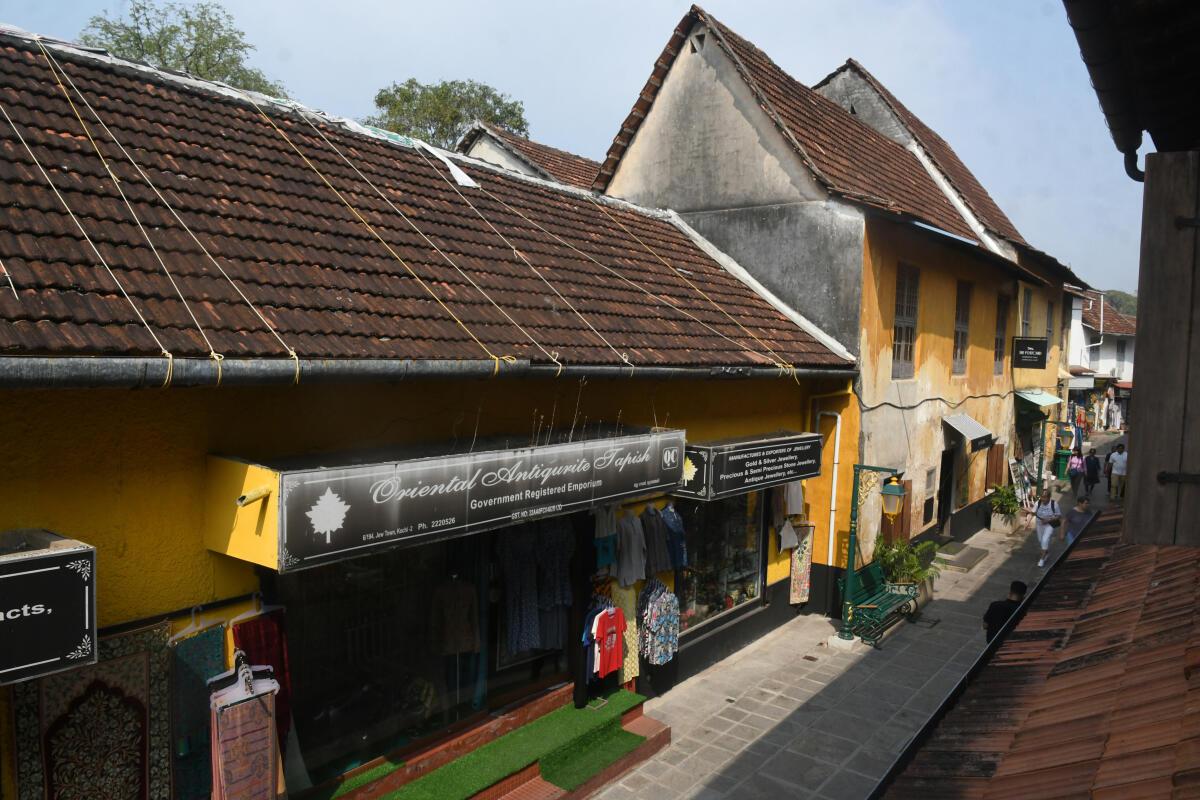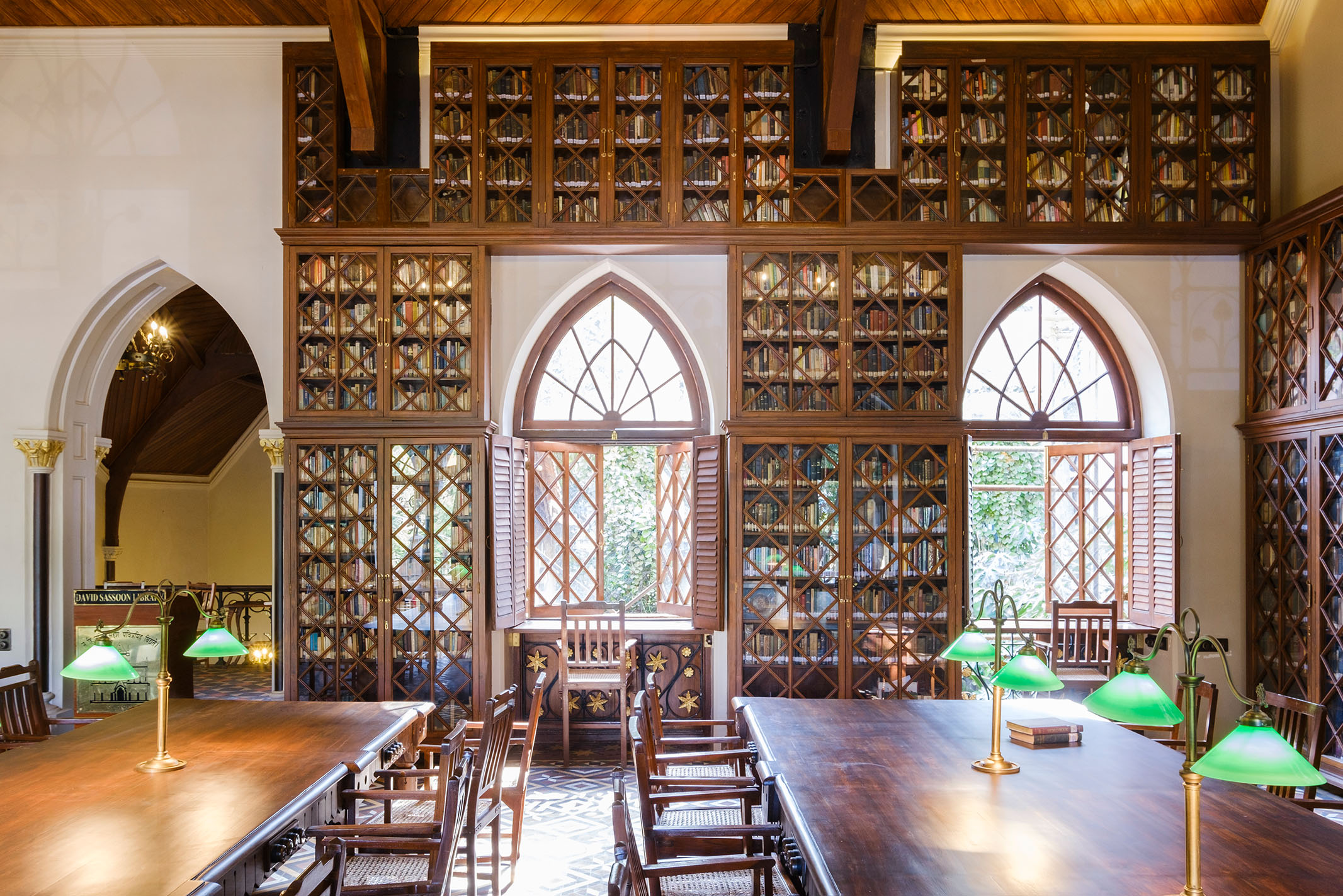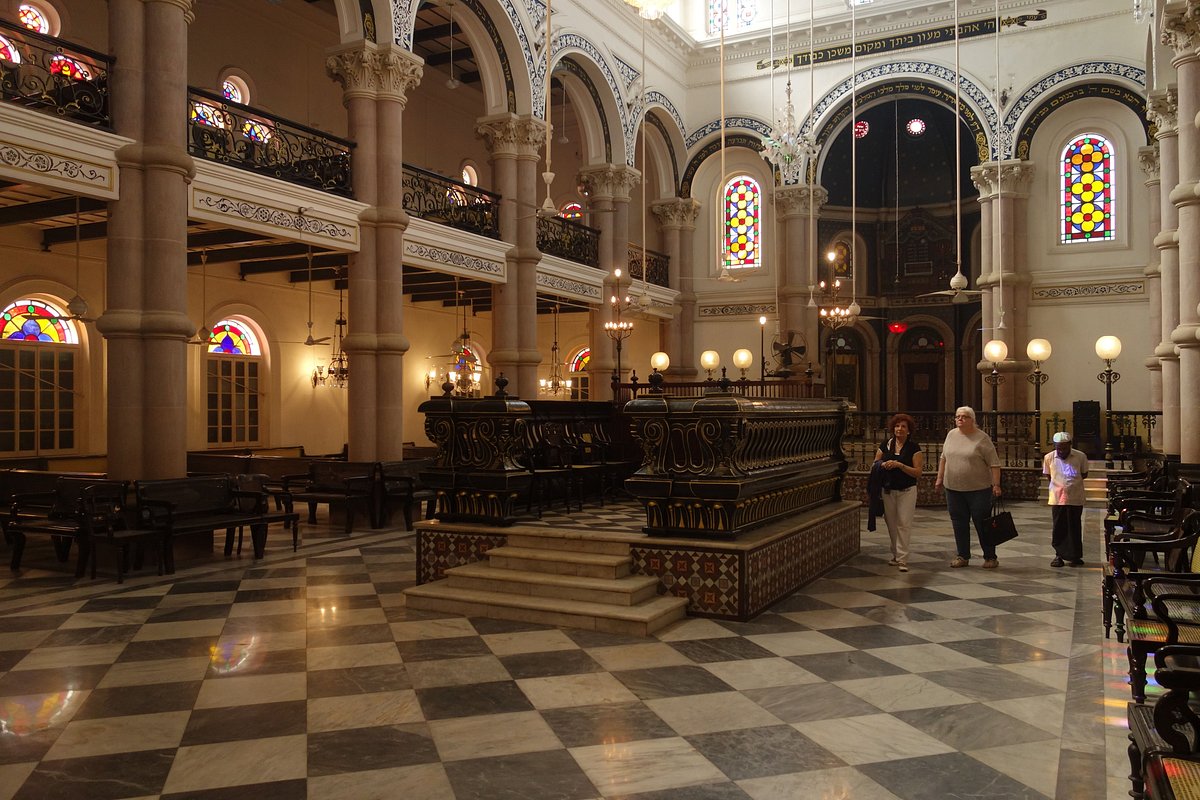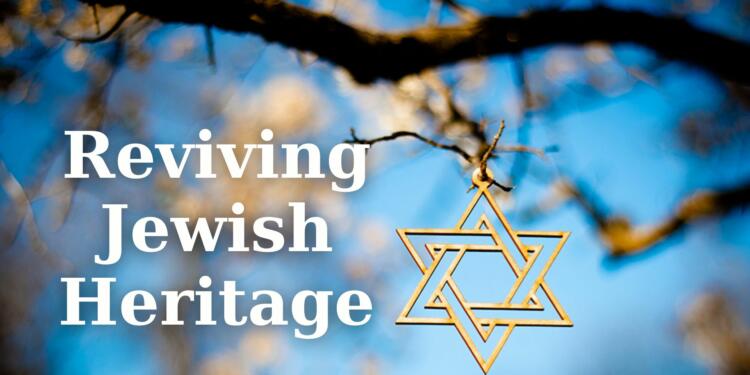Amidst the bustling streets and modern skylines of India’s cities lie hidden treasures, forgotten chapters of history waiting to be unearthed and celebrated. In the rush towards progress and development, the rich tapestry of India’s cultural heritage often fades into obscurity, overshadowed by the clamor of urbanization. However, amidst the chaos, there are those who strive to preserve and honor the legacy of our ancestors, breathing new life into old buildings and reviving the stories of generations past.
From the historic lanes of Kochi’s Jew Town to the bustling markets of Mumbai’s Kala Ghoda district, from the majestic hospitals of Pune to the sacred synagogues of Kolkata, each city holds within its walls a wealth of architectural marvels and cultural landmarks. These buildings stand as silent witnesses to the passage of time, bearing the scars of history and the imprint of countless lives lived.
Jew Town’s Living Museum
In the heart of Kochi lies a hidden gem, a testament to the rich tapestry of India’s Jewish heritage. Jew Town, with its labyrinthine lanes and centuries-old buildings, whispers tales of a bygone era, waiting to be rediscovered by eager visitors. Amongst the treasures of Jew Town, the A.B. Salem House stands tall, its restoration breathing life into the soul of this historic neighborhood.

A.B. Salem House: Restoring the Soul of Jew Town
Imagine stepping into a time capsule, where every creak of the floorboards tells a story of generations past. The A.B. Salem House, a 350-year-old marvel, embodies the spirit of Jew Town’s storied past. Its walls, adorned with memories of yesteryears, resonate with the laughter of families who once called it home.
The restoration of A.B. Salem House is not merely an architectural endeavor; it is a labor of love, a tribute to the resilience of a community determined to preserve its heritage. Led by visionaries like Jose Dominic, this restoration project breathes new life into a building steeped in history, ensuring that its legacy endures for generations to come.
Reviving Synagogue Lane: Echoes of a Bygone Era
Synagogue Lane, once bustling with life, stood as a testament to the vibrant community that thrived within its narrow confines. Here, amidst the hustle and bustle of daily life, families forged bonds that transcended time and space. Today, as the echoes of the past fade into obscurity, efforts are underway to revive the spirit of Synagogue Lane.
The revival of Synagogue Lane is more than a mere restoration project; it is a journey back in time, a celebration of a heritage that refuses to be forgotten. Through meticulous planning and dedication, Synagogue Lane is being transformed into a beacon of cultural revival, a reminder of the vibrant tapestry of life that once adorned its streets.
The Paradesi Synagogue: A Jewel in Kerala’s Crown
Amidst the labyrinthine lanes of Jew Town, the Paradesi Synagogue stands as a timeless monument to faith and resilience. Built over four centuries ago, this architectural marvel continues to enchant visitors with its intricate design and storied past. As one of the oldest active synagogues in the Commonwealth of Nations, the Paradesi Synagogue holds a special place in the hearts of both locals and tourists alike.
The restoration of the Paradesi Synagogue is not merely a preservation effort; it is a tribute to the enduring legacy of Kerala’s Jewish community. Through painstaking restoration work, the synagogue has been returned to its former glory, serving as a testament to the rich cultural heritage of Kochi.
Mumbai’s Melting Pot: Restoring Heritage Amidst Diversity
In the bustling metropolis of Mumbai, amidst the cacophony of modernity, lie hidden gems of architectural marvels, bearing testimony to the city’s rich cultural tapestry. Amidst the hustle and bustle, restoration efforts are underway to preserve and celebrate Mumbai’s diverse heritage. From the vibrant streets of Kala Ghoda to the hallowed halls of the David Sassoon Library, Mumbai’s heritage buildings stand as silent witnesses to the city’s glorious past.
Kala Ghoda’s Revival, where History Meets Culture
Nestled in the heart of Mumbai, the iconic Kala Ghoda district serves as a vibrant hub of art, culture, and history. Named after the iconic equestrian statue that graces its precincts, Kala Ghoda is a melting pot of creativity and innovation. Here, amidst the quaint cafes and art galleries, restoration efforts are breathing new life into the district’s historic landmarks.
The revival of Kala Ghoda is more than just a restoration project; it is a celebration of Mumbai’s artistic heritage. From the iconic Knesset Eliyahoo synagogue to the David Sassoon Library and Reading Room, Kala Ghoda’s architectural treasures are being lovingly restored to their former glory, serving as a reminder of the city’s rich cultural legacy.
David Sassoon Library
Perched on the bustling streets of Mumbai, the David Sassoon Library stands as a beacon of intellectual heritage, a testament to the city’s rich literary tradition. Built over a century ago, this architectural gem continues to inspire scholars and bibliophiles alike with its timeless elegance and scholarly ambiance.

The restoration of the David Sassoon Library is not merely a preservation effort; it is a tribute to Mumbai’s intellectual legacy. Through meticulous restoration work, the library has been transformed into a cultural hub, hosting literary events, book launches, and scholarly discussions, ensuring that its legacy endures for generations to come.
The Saga of Masina Hospital
Amidst the bustling streets of Mumbai lies the historic Masina Hospital, a symbol of medical excellence and compassion. Founded over a century ago, Masina Hospital has served as a beacon of hope for countless patients, offering medical care and solace in times of need.
The restoration of Masina Hospital is more than just a renovation project; it is a testament to Mumbai’s commitment to preserving its medical heritage. Through careful restoration work, the hospital’s historic buildings have been lovingly restored, ensuring that they continue to serve the community for generations to come.
Sassoon’s Enduring Legacy
Nestled amidst the verdant landscapes of Pune lies a treasure trove of architectural marvels, each bearing the indelible mark of Sassoon’s enduring legacy. From the majestic David Sassoon hospital to the stately Jacob Sassoon hospital, Pune’s architectural tapestry tells a tale of Victorian grandeur and timeless elegance. As custodians of this rich heritage, restoration efforts are underway to ensure that Sassoon’s legacy lives on for generations to come.
A Testament to Victorian Grandeur
Standing as a beacon of medical excellence, the Sassoon General Hospital stands tall amidst the bustling streets of Pune. Built in the early Gothic and English Victorian Gothic styles, this architectural masterpiece is a testament to Sassoon’s vision of providing state-of-the-art medical care to the people of Pune. With its soaring spires and intricate facades, the hospital exudes an aura of grandeur and majesty, serving as a reminder of Pune’s rich medical heritage.
The restoration of the Sassoon General Hospital is not merely a renovation project; it is a tribute to Victorian craftsmanship and architectural ingenuity. Through meticulous restoration work, the hospital’s historic buildings have been lovingly preserved, ensuring that they continue to serve as a beacon of hope and healing for generations to come.
Embracing Evolution
As custodians of Pune’s architectural heritage, we are faced with the challenge of preserving our past while embracing the future. Adaptive reuse offers a sustainable solution, allowing us to breathe new life into historic buildings while preserving their unique character and charm. From transforming old hospital wards into modern medical facilities to repurposing historic buildings as cultural centers and community spaces, adaptive reuse allows us to honor the past while embracing the present.
Kolkata’s Illuminating Past
In the labyrinthine streets of Kolkata, where history whispers through every cobblestone and alleyway, lies a tapestry of diverse cultures and rich heritage waiting to be explored. Kolkata’s architectural landscape is a testament to its storied past, with each building weaving a unique narrative of the city’s vibrant history. Amidst this rich tapestry, the Maghen David Synagogue stands as a beacon of light, illuminating Kolkata’s skyline and serving as a symbol of the city’s multicultural heritage.
Maghen David Synagogue
Perched amidst the bustling streets of Kolkata, the Maghen David Synagogue stands as a testament to the city’s rich Jewish heritage. With its ornate architecture and majestic domes, the synagogue serves as a beacon of light, illuminating Kolkata’s skyline and capturing the imagination of all who behold it. As one of the city’s most iconic landmarks, the Maghen David Synagogue holds a special place in the hearts of both locals and visitors alike, serving as a reminder of Kolkata’s multicultural fabric.

Restoration Challenges
While Kolkata’s architectural heritage is rich and diverse, it is not without its challenges. Preservation efforts often face numerous hurdles, from bureaucratic red tape to financial constraints and technical difficulties. Navigating these complexities requires a delicate balance of expertise, creativity, and perseverance. Despite the challenges, restoration projects like the Maghen David Synagogue stand as a testament to Kolkata’s commitment to preserving its cultural heritage for future generations to cherish and enjoy.
Embracing the Sacred Geography
Kolkata’s architectural landscape is a reflection of its diverse religious landscape, with sacred sites representing a myriad of faiths scattered throughout the city. From the towering spires of churches to the ornate domes of mosques and temples, Kolkata’s tapestry of faith is a testament to its multicultural heritage. Embracing this sacred geography allows us to celebrate the rich diversity of Kolkata’s religious traditions and foster a spirit of unity and understanding amongst its diverse communities.
Crafting the Future
In our journey towards preserving and celebrating heritage, adaptive reuse emerges as a path that bridges the past with the present and crafts a future steeped in syncretism. Through adaptive reuse, historic buildings are revitalized and repurposed, breathing new life into old structures while honoring their cultural significance. This approach not only preserves our heritage but also fosters a sense of continuity, where the echoes of the past resonate harmoniously with the aspirations of the present.
Echoes of Syncretism
At the heart of adaptive reuse lies a celebration of diversity, where the rich tapestry of cultural heritage intertwines to form a vibrant mosaic of identities. Through the adaptive reuse of historic buildings, we embrace the multiplicity of voices and narratives that shape our collective identity. From synagogues to mosques, temples to churches, each building tells a story of cultural exchange and coexistence, echoing the spirit of syncretism that defines our shared heritage.
Stories of Shared Legacy
Central to the success of adaptive reuse is the active participation of the community, whose collective efforts breathe life into neglected structures and transform them into vibrant hubs of activity. Community-led conservation projects not only empower local residents but also foster a sense of ownership and pride in their shared heritage. These stories of shared legacy serve as inspiration, reminding us of the power of collaboration in preserving and celebrating our collective past.
Preserving the Past, Shaping the Future
As custodians of our cultural heritage, we bear a collective responsibility to preserve the past and shape the future for generations to come. Through adaptive reuse and community-led conservation efforts, we can ensure that our architectural treasures continue to inspire and enrich our lives. By embracing diversity, fostering collaboration, and honoring our shared legacy, we can craft a future that is rooted in the values of syncretism, resilience, and cultural exchange.
As we draw the curtains on our exploration of India’s architectural heritage, we find ourselves not at an end, but at a new beginning. Through the lens of preservation, we have unearthed hidden gems and celebrated the stories woven into the very fabric of our cities. Yet, beyond preservation lies a deeper purpose – inspiration.
From the bustling streets of Kochi to the vibrant markets of Mumbai, from the historic hospitals of Pune to the sacred synagogues of Kolkata, each building stands as a testament to the resilience of our ancestors and the ingenuity of our forebears. Through restoration and adaptive reuse, we have breathed new life into old structures, transforming them from relics of the past into beacons of hope for the future.
But our journey does not end here. As custodians of our cultural heritage, we bear a collective responsibility to ensure that these treasures continue to inspire and enrich the lives of future generations. From community-led conservation efforts to the embrace of diverse cultural traditions, we must strive to preserve our shared history and shape a future rooted in the values of inclusivity, creativity, and resilience.
Also Read: Why Every Indian Parent Should Push Their Kids to Watch “Swatantrya Veer Savarkar”





























